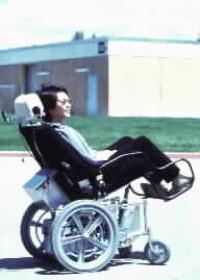Interfaces for People with Disabilities
David L. Jaffe
VA Medical Center
11/04/1997
|
 |
Major impairments
a continuium of capabilities
- Vision - low vision, blindness
- Hearing - hard of hearing, deafness
- Speech - disarthric speech, swallowing
- Movement - spinal cord injury, amputation,
arthritis
- Cognitive - stroke, brain injury
- Multiple - deaf/blindness
Major functions / activities
affected
- Vision - seeing, reading, navigation
- Hearing - communication
- Speech - communication
- Movement - mobility, grasping, feeding,
navigation
- Cognitive - understanding, learning, remembering,
scheduling
Computer activities affected by
disabilities
- seeing the screen
- moving the mouse
- keyboarding
- handling media
- using a printer
- hearing system sounds
- understanding
Rationale for adapted / assistive
devices
- independence
- privacy
- quality of life
- empowerment
- cost savings
- inclusion / mainstreaming
Device design issues
- size, portability, battery power
- aesthetics
- social acceptance
- mental load
- physical fatigue
- communication speed
- ability to interact with environment
- ability to integrate with other devices
(computers)
- market size
- economics
VA RR&D projects
- Ultrasonic Head Control Wheelchair and Interface
- Lingraphicia
- HandBike
- Lower Body Positive Pressure
- Robotics
- Fingerspelling Hand
Some commercial products
- Tactile Braille Display
- Tactile Graphic Display
- Screen Reader
- Voice Recognition
- Speech Synthesis
- Communication Devices
The following products and links are presented here for
reference and informational use. The Rehab R&D Center cannot accept
responsibility for the product or commercial information that they may contain.
The Rehab R&D Center does not endorse any particular policy, program,
product, service, position, issue, conference, presentation, research, website,
therapy, or commercial organization.
Adapted computer products
Jim Lubin's
Website
Contact information
dljaffe -at- roses.stanford.edu
|
 |
|




























